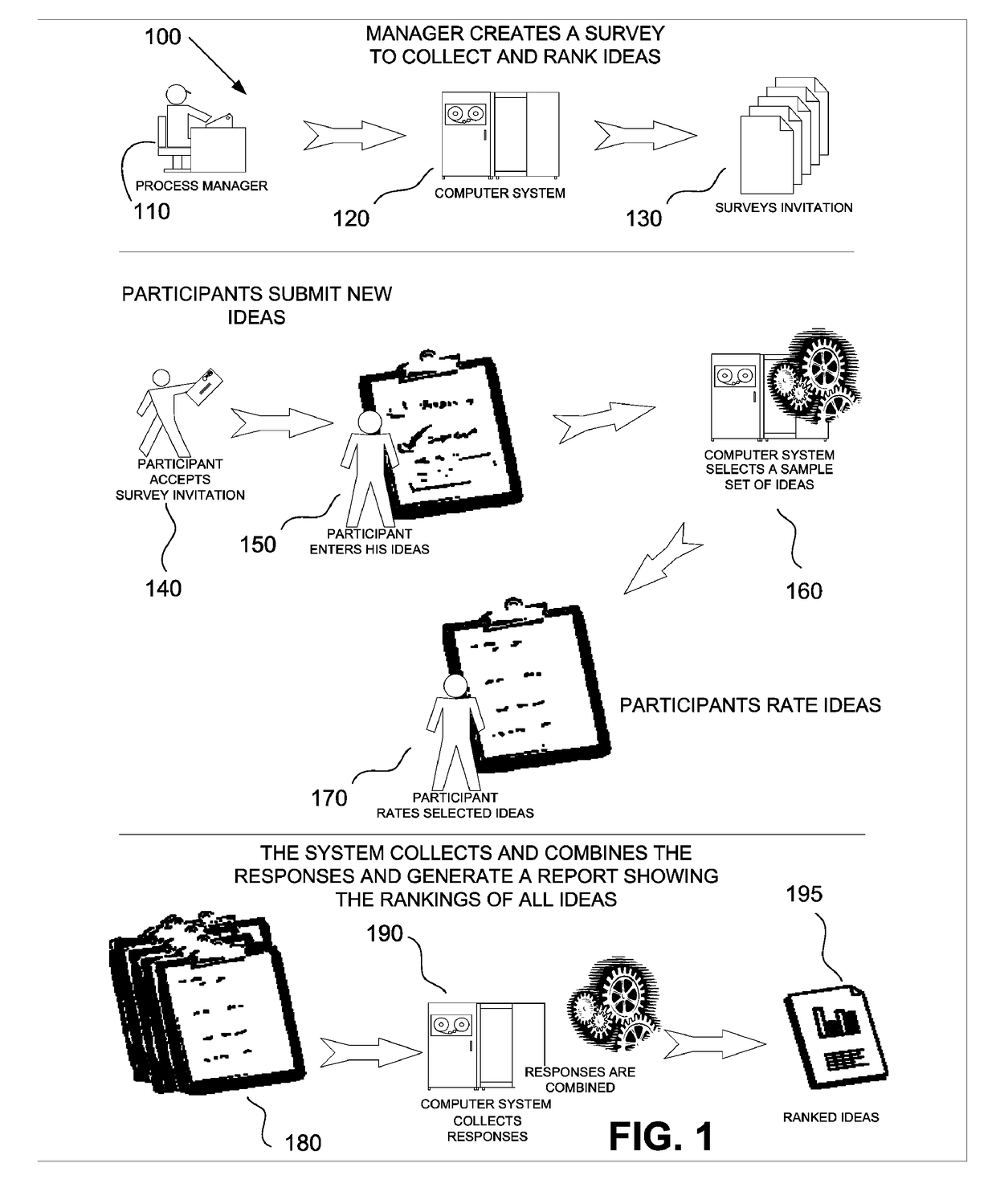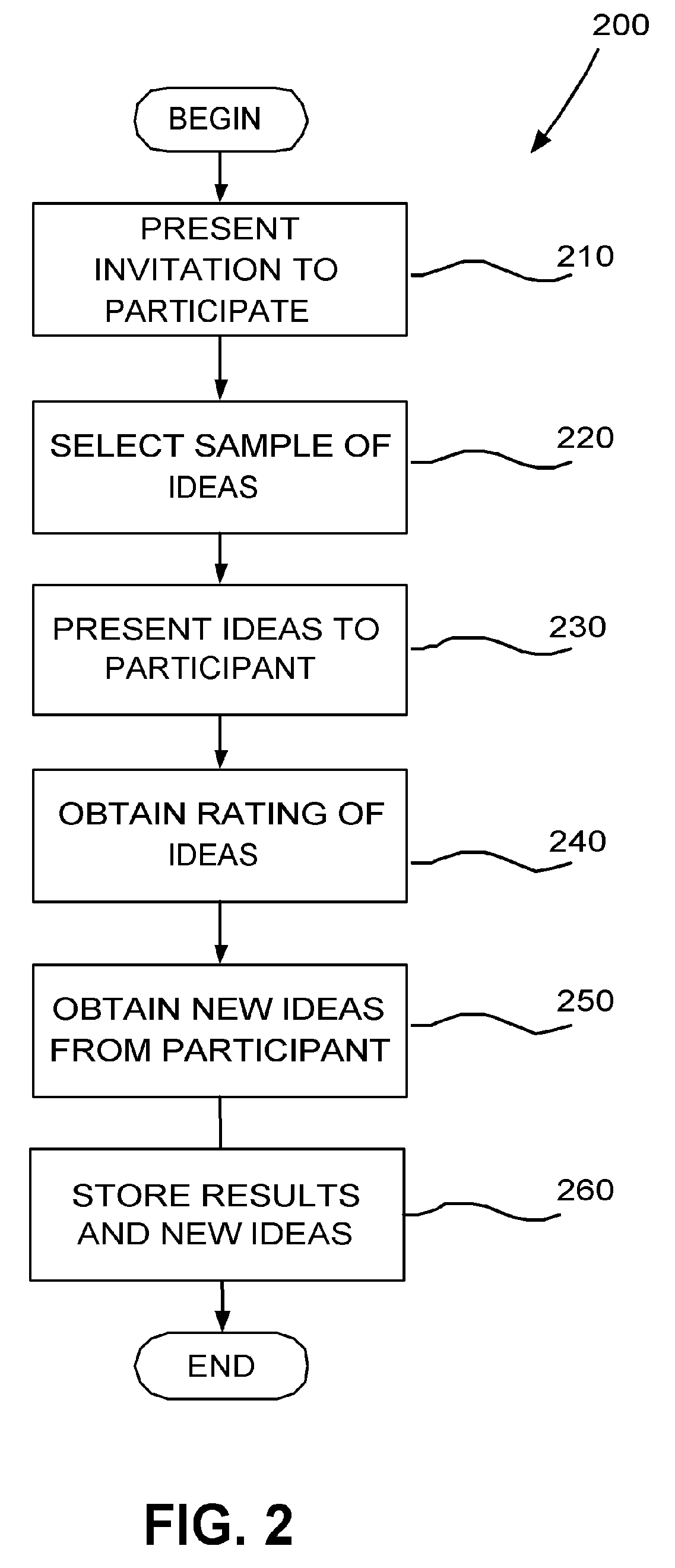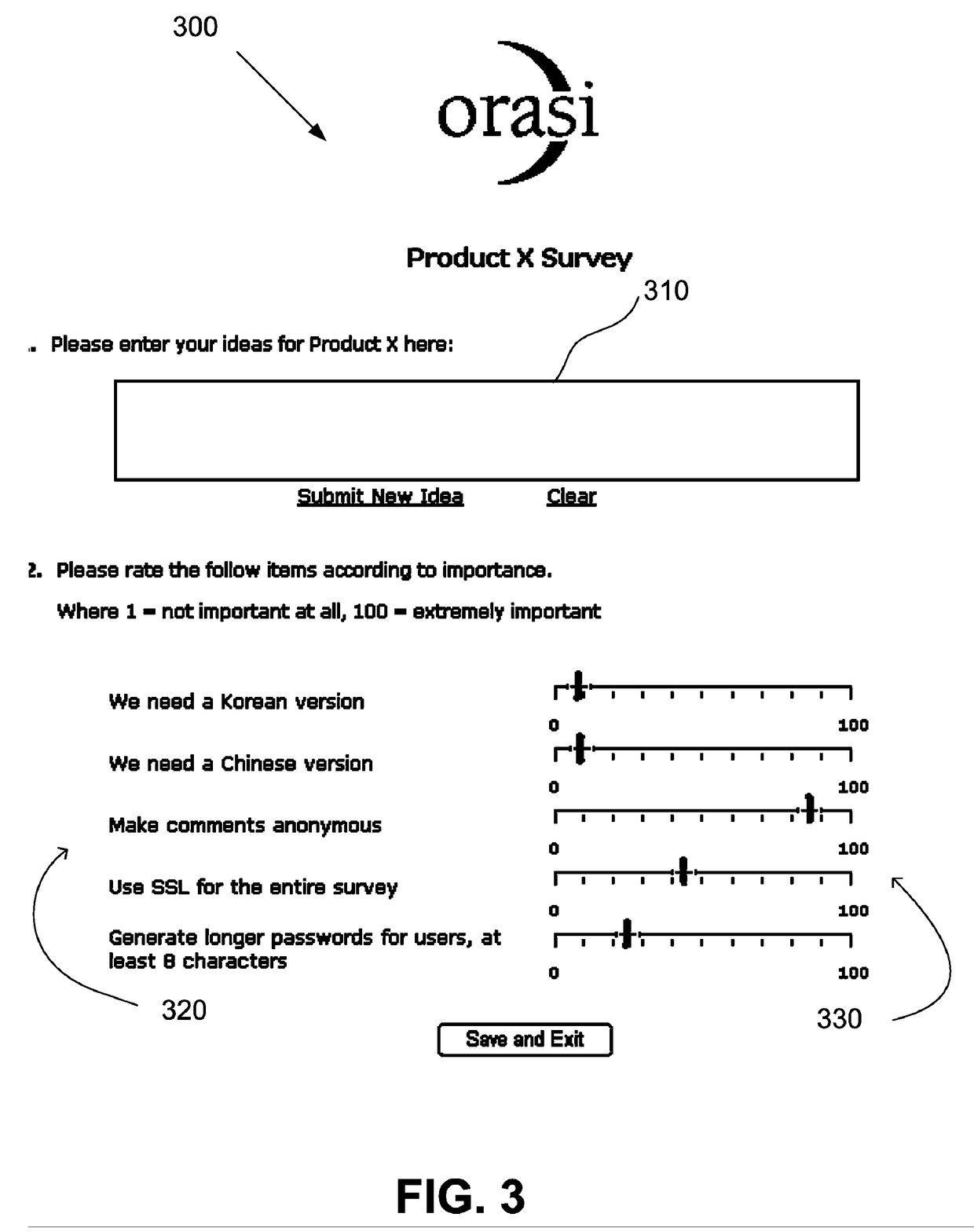Confidence based selection for survey sampling
a survey sampling and confidence-based selection technology, applied in the direction of instruments, market predictions, commerce, etc., can solve the problems of survey effectiveness, survey response rate typically decline, and user may not complete the survey
- Summary
- Abstract
- Description
- Claims
- Application Information
AI Technical Summary
Benefits of technology
Problems solved by technology
Method used
Image
Examples
Embodiment Construction
[0086]I. Introduction
[0087]The present invention is generally directed to a computer-implemented system for estimating the preference of a list of items as perceived by a population of participants without having each participant rate each item available. The system may be implemented using a variety of computer technologies including, but not limited to, the internet, World Wide Web, email, client-server, and distributed systems.
[0088]The system of the present invention encourages participation by limiting the number of items that each participant will rate, thereby reducing the amount of time needed to complete the survey. The system uses statistics to select the items for which a low statistical confidence has been reached relative to other items. The items that have a low confidence level are those that have not been sufficiently rated, or that have been rated several times and have received inconsistent responses.
[0089]The system of the present invention may be used for numerou...
PUM
 Login to View More
Login to View More Abstract
Description
Claims
Application Information
 Login to View More
Login to View More - R&D
- Intellectual Property
- Life Sciences
- Materials
- Tech Scout
- Unparalleled Data Quality
- Higher Quality Content
- 60% Fewer Hallucinations
Browse by: Latest US Patents, China's latest patents, Technical Efficacy Thesaurus, Application Domain, Technology Topic, Popular Technical Reports.
© 2025 PatSnap. All rights reserved.Legal|Privacy policy|Modern Slavery Act Transparency Statement|Sitemap|About US| Contact US: help@patsnap.com



